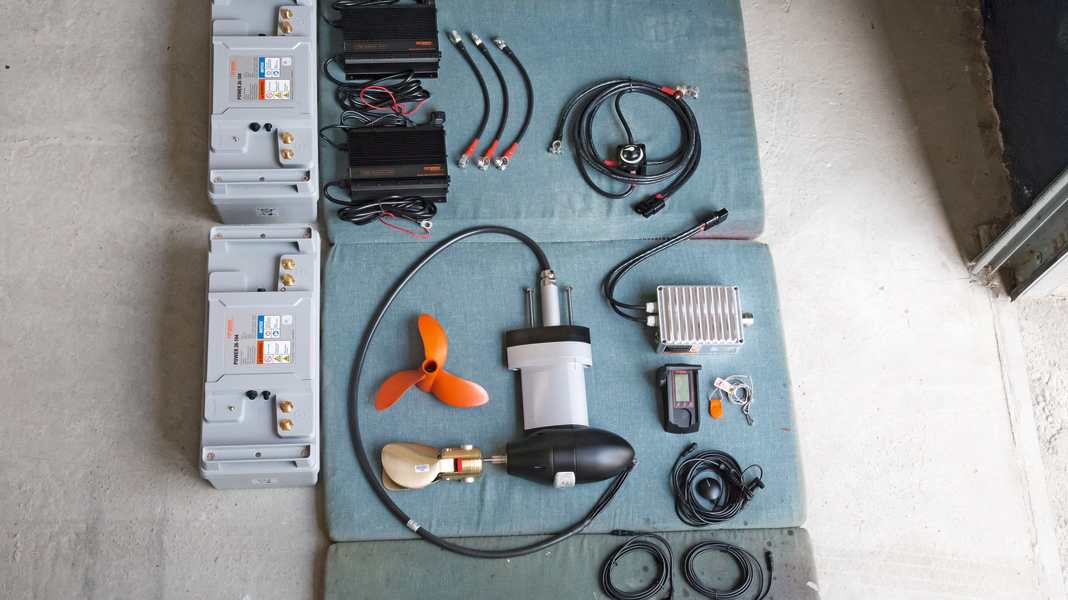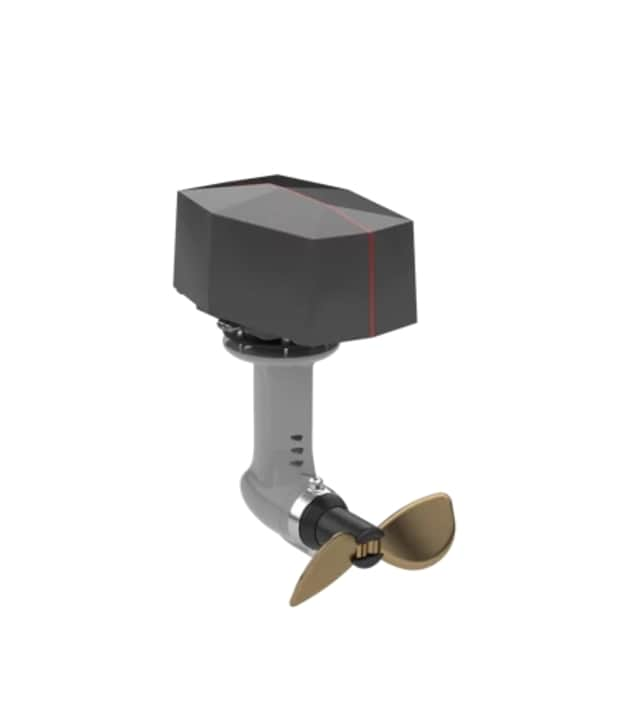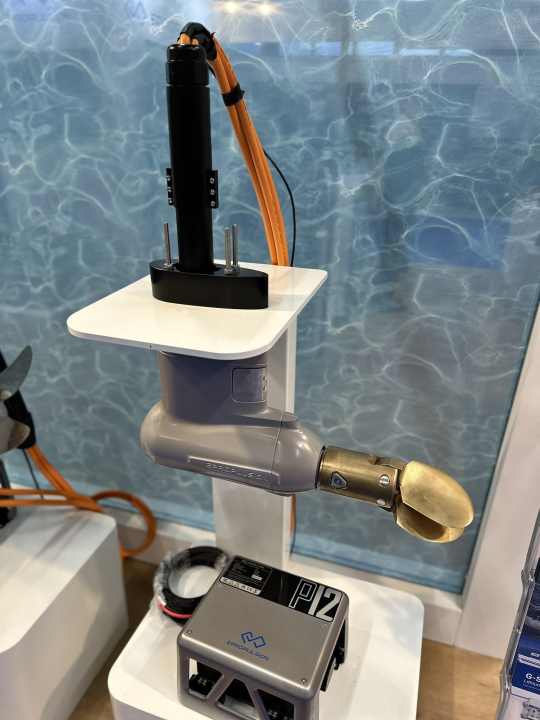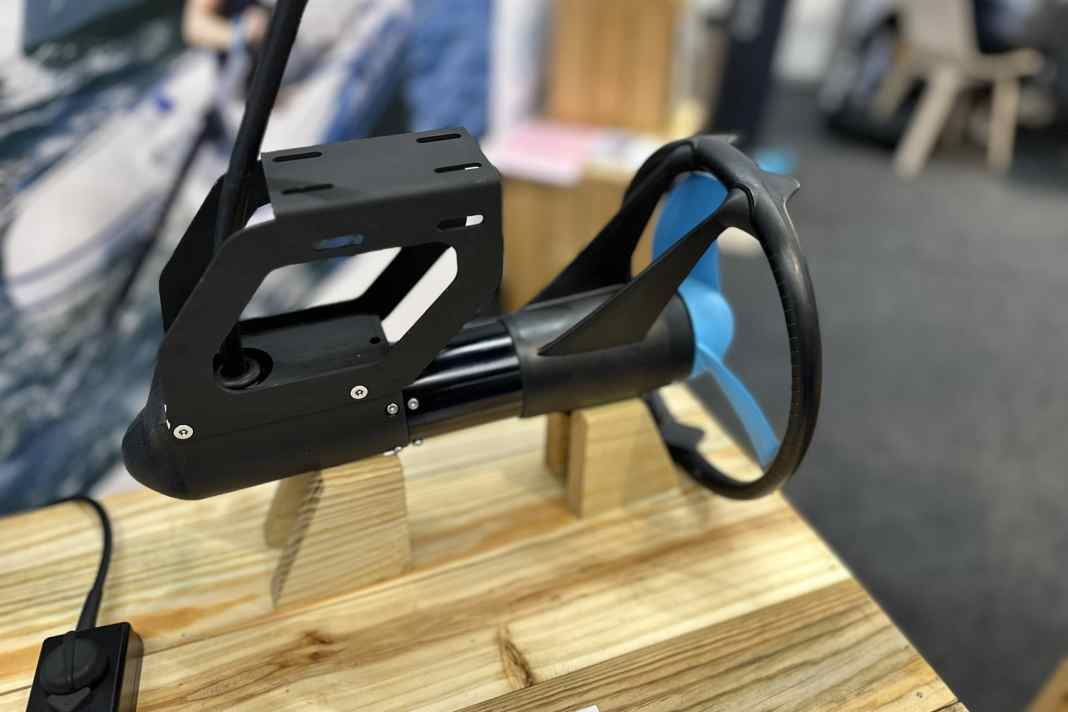
Pod drive from Mitek

The pod drive from Mitek has been specially developed for sailboats with saildrive propulsion. The system works with 48 volts and is available in four different power levels. The smallest motor offers 6 hp or 5 kW, the other models have 10, 15 and 20 hp (7.5 kW, 12 kW, 15 kW). With the small version, boats up to 2.5 tonnes can get underway. With the 15kW version it is 7 tonnes. Even with the most powerful version, the voltage remains at 48 volts, which simplifies installation and maintenance and reduces costs. When the motor is no longer needed, the folding propeller can simply be folded away - similar to a conventional diesel drive.
The power for the system comes from external batteries, which must be housed in the ship. Lithium iron phosphate batteries (LiFePO4) or the lighter lithium nickel manganese cobalt (Li-NMC) batteries can be used for this purpose. Of course, safety functions such as an emergency stop switch, overvoltage protection and a low battery alarm are also available.
The price for a 5 kW system starts at 9,999 euros. However, a throttle, the connection cables, a charger and at least one 48-volt battery with 100 Ah are also included. All in all, this would come to around 13,100 euros.
Pods from ePropulsion

The Pod Drive from ePropulsion is also quiet and, according to the manufacturer, maintenance-free. As no additional gearbox is required, there are fewer moving parts, which reduces maintenance costs. One particular advantage is the ability to recuperate power while sailing and recharge the battery. Five different power classes are available. The first is a 1 kW version for boats up to 1.5 tonnes. This is followed by 3 kW and 6 kW. The latter can power sailing yachts up to 2.7 tonnes. All three versions remain at 48 volts. If you want more power, 12 kW (six tonnes boat weight) and 20 kW (ten tonnes boat weight) are available. Here, however, we are already at 96 volts, which also means that whoever installs the system needs a high-voltage licence. The limit is 60 volts.
The price for the 1 kW variant is 1,249 euros. The most popular version with 6 kW costs 3,249 euros. Then there is the remote control, 150 Ah battery and charger. All in all, this adds up to around 6,000 euros.
Pod drives from Temo




Temo has made a name for itself with the Temo 450, an innovative electric outboard motor. Temo is now expanding its portfolio and also offers pod drives. These can either be retrofitted or integrated directly when building a boat. There are three power levels, although the exact prices depend on the project and have not yet been announced.
What are pod drives actually?
Pod drives were a revolution in the field of modern ship propulsion. The name "pod" refers to the underwater part in which the entire electric drive system is housed. What makes it special is that the electric motor sits directly in the pod under the boat's hull and drives the propeller. As a result, the pod can usually rotate 360 degrees, which makes manoeuvring extremely easy - perfect for narrow harbours. If you don't want to do without a diesel engine, you can also have a hybrid system installed.
One of the biggest advantages is efficiency. The direct power transmission and streamlined design of a pod drive consumes less power and thus reduces emissions during operation. It also saves space in the interior, as bulky shaft systems or Z-drives are no longer required. The motor is often either completely eliminated or becomes significantly smaller. This creates space for other things - be it a larger cabin or additional batteries, which in turn provide more load capacity. Another advantage is that pod drives are much quieter, as the motor is located directly in the nacelle.
The possible applications
Nowadays, the drives are used almost everywhere. On luxury yachts, they ensure easy manoeuvring, while on cruise ships they save space and energy. They show their strengths on icebreakers, as they work equally efficiently forwards and backwards. They are also unbeatable on research vessels and ferries, where quiet operation and low emissions are essential. Anyone who has seen the TT-Line ferry "Akka", which travels between Travemünde and Trelleborg, docking knows how manoeuvrable 190 metres can be. This is partly due to the drives. They are also gaining ground in the smaller boat segment. They are often found on self-built e-boats in particular.
Pods come with challenges, but the technology is gaining popularity
However, there are also a few challenges: Pod drives are somewhat more expensive to purchase than a normal system. They also require specialised knowledge if repairs are necessary. Another problem is the limited range of purely electric drives. To increase this, many batteries are needed, which requires space and weight. Nevertheless, the advantages, such as easy handling, manoeuvrability and efficiency, are making the technology increasingly popular. So it's no wonder that they are gaining ground in modern shipping. This trend could also be seen at this year's METS 2024 in Amsterdam, where many manufacturers presented new systems. METS is the world's largest B2B trade fair in the leisure boating sector. As demand increases, these systems are also becoming increasingly affordable.

